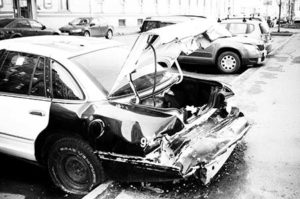
That may be true in some states, but Washington operates on a pure comparative fault rule. That means that each driver is assigned some portion of the blame.
In Washington, even a driver who is 99% at fault for an accident can pursue damages against a driver who is only 1% at fault. So saying that a driver who rear-ends another driver is automatically at fault does not begin to paint a complete picture.
Why Rear-End Drivers are Usually At Fault
What’s true in this scenario is that the driver who rear-ended the other driver is generally at fault. Either they weren’t paying attention to the road and slammed into the back of another driver or they were following too close when the leading driver hit the breaks. Indeed, the court and insurance companies will generally assume the rear-end driver was to blame for the accident unless there is some other evidence to the contrary.
When Rear-End Drivers are Not At Fault
There are a number of situations in which the driver who is rear-ended can be held fully or partially at fault. First, we’ll take a look at the scenarios in which the rear-end driver is likely to take the majority of the blame.
- Failure to yield. As an example, let’s say a driver pulls out of their driveways without stopping to look if there is any oncoming traffic. This happens all the time on busier residential streets. A driver backs out of his driveway and is slammed into by another driver. In this case, the driver who is backing out had the responsibility of making sure traffic was clear. They violated the laws of traffic by not yielding the right of way.
- Cutting someone off. Let’s say, for example, that you are in the right-hand lane of a busy three-lane highway. You attempt to maneuver in front of another car into the middle lane. The car that is already in the middle lane rear-ends you as you slow down. In that case, you would be responsible—not the driver you rear-ended.
- Intentionally pumping your brakes to mess with a tailgater. At various points in our lives, it’s something we’ve all done. No one likes being tailgated and it’s tempting to try to pump the brakes on them get them off your back. Unfortunately, that could end up seeing you assigned some of the fault in an accident case. This could reduce the value of your claim if you’re injured or your property is damaged.
Contributing Factors to Rear-End Collisions
There are some factors that can be taken into consideration when there is a rear-end accident. For instance, the driver was rear-ended may see some of the other driver’s fault diminished if their brake lights were not working at the time of the accident. If the driver stopped suddenly for no good reason, they may see their blame increased. As always, these situations are not as black and white as urban legends would have us believe.
Talk to a Yakima Car Accident Attorney
If you’ve been in a car accident and suffered serious injuries, you will need a lawyer to help litigate your claim. The more serious your injuries are, the higher the stakes, and the more important it is to maximize your recovery. Give the experienced auto accident attorneys at Kapuza Lighty PLLC a call or talk to us online for a free consultation.
